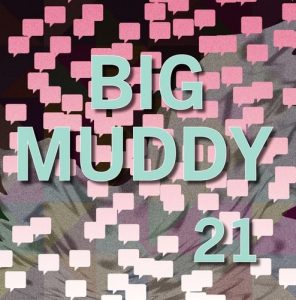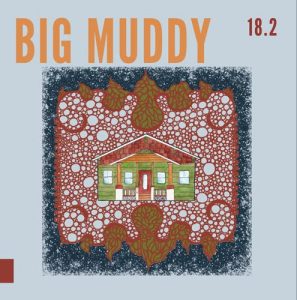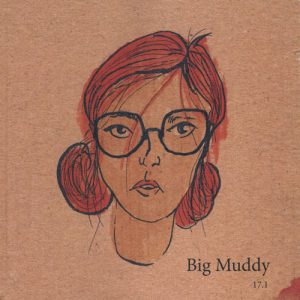Big Muddy – 2009
Volume 9 Issue 2
2009
Biannual
Sima Rabinowitz
This journal defines itself as “a unique collection of issues, events, & images from the Great River Road,” and it publishes works of history, the sciences, business, photography, and creative writing. Works are not classified in the Table of Contents, so it can be a little difficult to distinguish between genres in some cases. Not in the case, however, of Phil Harvey’s short story, “Tomato Only,” which is typical of much of the poetry and prose in the issue, accessible, readable, and what, for lack of a better term, I’ll categorize as natural. Harvey’s story begins: “Albert had asked for tomato on his tuna salad sandwich, no mayonnaise, please. He had been very specific, very precise, taking extra care because the man behind the deli counter at the American Grill looked oriental and probably didn’t speak English very well.”
This journal defines itself as “a unique collection of issues, events, & images from the Great River Road,” and it publishes works of history, the sciences, business, photography, and creative writing. Works are not classified in the Table of Contents, so it can be a little difficult to distinguish between genres in some cases. Not in the case, however, of Phil Harvey’s short story, “Tomato Only,” which is typical of much of the poetry and prose in the issue, accessible, readable, and what, for lack of a better term, I’ll categorize as natural. Harvey’s story begins: “Albert had asked for tomato on his tuna salad sandwich, no mayonnaise, please. He had been very specific, very precise, taking extra care because the man behind the deli counter at the American Grill looked oriental and probably didn’t speak English very well.”
The work most definitively connected to Big Muddy’s regional focus: two essays, Lisa Knopp’s “Nauvoo, the Beautiful Place” and Keith A. Sculle’s “In Public View and Private Memory: Gobblers Knob Deer Park.” Knopp’s essay is the history of a popular tourist town in western Illinois and Sculle’s recounts the history of a popular recreation area in west-central Indiana. Sculle’s essay is accompanied by photos and reproductions of artifacts from Gobblers Knob Deer Park publicity.
One of the more unusual pieces in this issue is “Dead Girl Brand II” by Laura Madeline Wiseman. The dead girl’s story appears in a column of paragraphs on the right side of the page with a term in italics alongside it in a column on the left (price cut, jingle, punctum, receipts, remainder). This is decidedly the edgiest and most inventive contribution to the issue.
One of the pieces I found most appealing is Jennifer Long’s “Unjkake Etanjan Yuhapi,” a poem based on material taken from The Doctors Mayo (1941) and a newspaper article from the Star Tribune from 2008. I liked also very much a poem by Missouri’s first Poet Laureate, Walter Bargen, “Everything Exists in its own perfection”:
The West was in us. I don’t know what happened.
Cochise and Kit Carson, Seattle and San Franciso,
Saguaro and redwood, ocotillo and Douglas fir.
More absolute, intense and pure.
More dust than blood. More basalt than bone.
And enough sky. We were sure of that
Clouds stepping beyond what we knew
and where we prayed to arrive.
…
Sangre de Cristos bleeding rock through
another evening, and to the east,
drawn a hundred miles, our shadows
prospect for disappearance.
The issue concludes with a number of well-written and thoughtful reviews.
[www6.semo.edu/universitypress/bigmuddy/]



